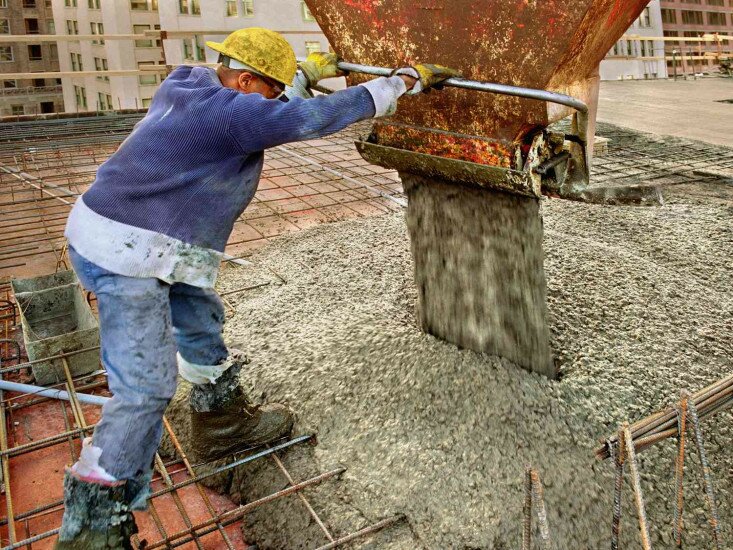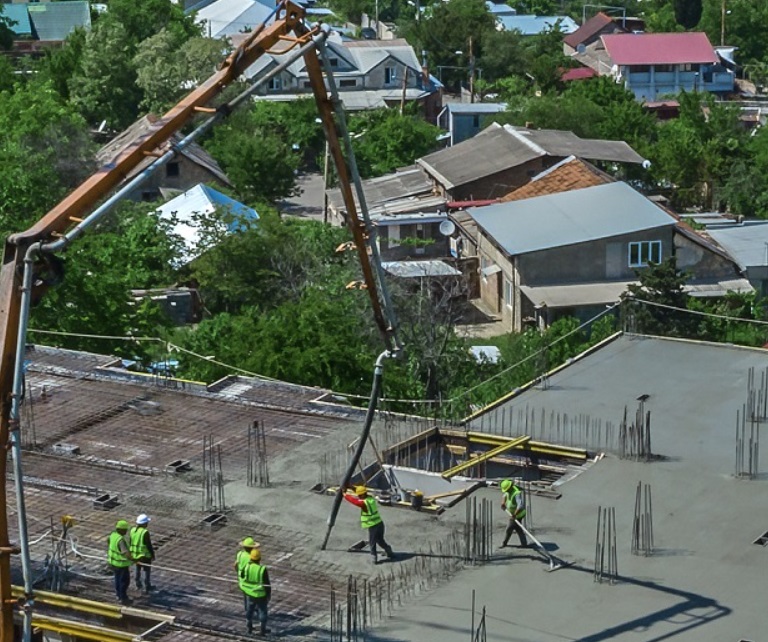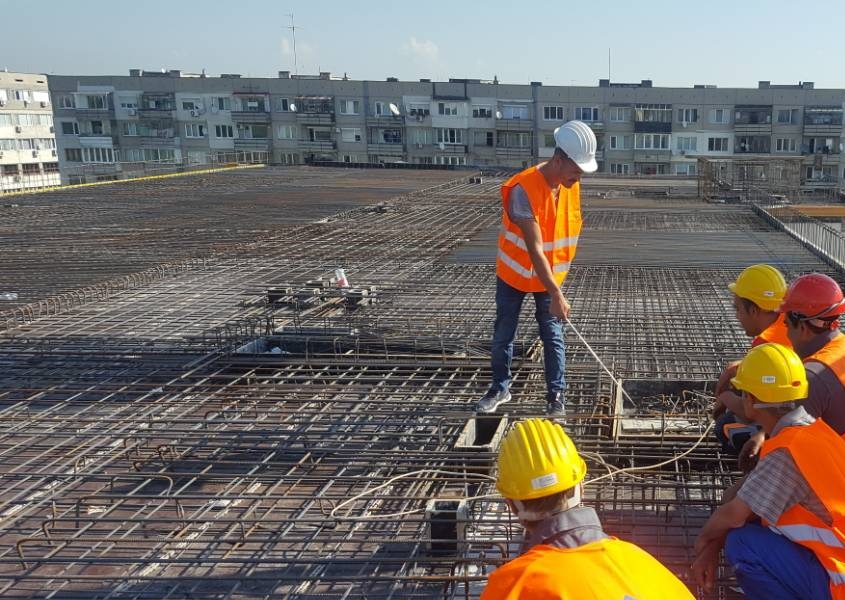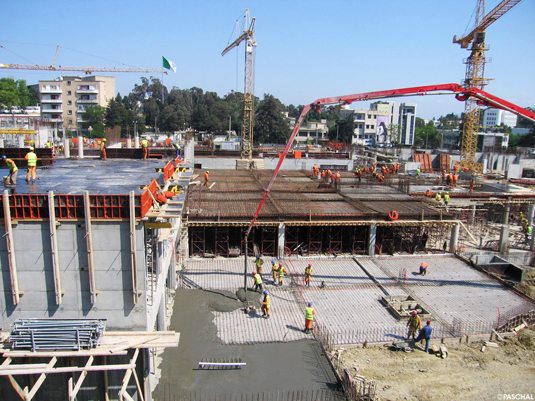How to store scaffolding in winter?
12 January 2026

A horizontal floor is a floor/ceiling between floors in a multi-story building. The floor must be strong because it has to withstand the weight of furniture, people and everything that stands on the floor in the room.
When choosing the type of flooring, take into account the availability of materials, special equipment and the qualifications of the builders.
Currently, the most optimal is a monolithic reinforced concrete floor.


The formwork panels are laid on beams, under which there are formwork posts. The height of the racks should be selected based on the future ceiling height. To give the racks stability, they are secured with tripods. Uniforks (crowns) are placed on racks located at the junction of the beams, and supporting heads are placed on racks located under the middle of the beam. The distance between the formwork posts is on average 1.5 m.
Panel plywood with a thickness of 18-21 mm can withstand concrete pressure up to 90 kN/m2. There should be no cracks in the formwork, otherwise “concrete milk” will flow out through them, and the strength of the concrete will decrease.

For concrete reinforcement, rods with a cross section from 8 to 16 mm are used. The reinforcement is tied into a mesh with knitting hooks, using knitting wire with a diameter of 0.8-1.2 mm. A protective layer with a thickness of at least 2 cm must be made for the reinforcement. To do this, protective layer clamps are placed under the reinforcement frame.
When the reinforcement is laid, concrete can be poured. To create a monolithic floor, concrete of class B15-B25 is used. The creation of a concrete mixture involves cement (the main binding material), sand (fine filler), and crushed stone (coarse filler).

The concrete floor should be poured immediately to the required thickness, adhering to one direction of work. The concrete pouring process must be continuous, using a vibrator for compaction.
When the concrete is poured, it should be periodically moistened - watered if the weather is warm +15C and above. It is recommended to water the concrete with water for a week every 3 hours for the first three days, at night - once and then three times a day. If it is cool outside - up to +5C, you need to provide heating. Hardening concrete will reach its design strength after 28 days, but the formwork can be removed when it reaches 70% of its design strength.
If you want to make a monolithic concrete floor, you will need formwork, which you can buy on our website.
To clarify questions regarding formwork, call us! We will help with formwork calculations and offer the best prices!
Also read the blog “How to properly install floor formwork?”